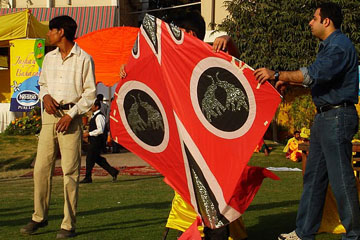
Photo: Dr. Shaggy
1. Visit a Sufi Shrine or Music Festival
While major news networks often spotlight Islamic fundamentalist movements like the Pakistani Taliban, rarely do foreigners get a glimpse of the Punjab’s dominant form of Islam: Sufism. Sufi adherents often gather together on Thursday nights seeking spiritual enlightenment, or merely a good time, through traditional qawwali singing.
The most happening place in the city on any given Thursday is Data Darbar shrine where drummer Pappu Sain beats the dhol well past midnight. You can also catch Sufi music events at Peeru’s Café or the Al Hamra Arts Centre on Mall Road.
Tip: Dhol nights at shrines tend to be all-male events, and some locals combine the experience with drug use. Women should dress conservatively, travel with a male companion, and avoid crowded areas.


